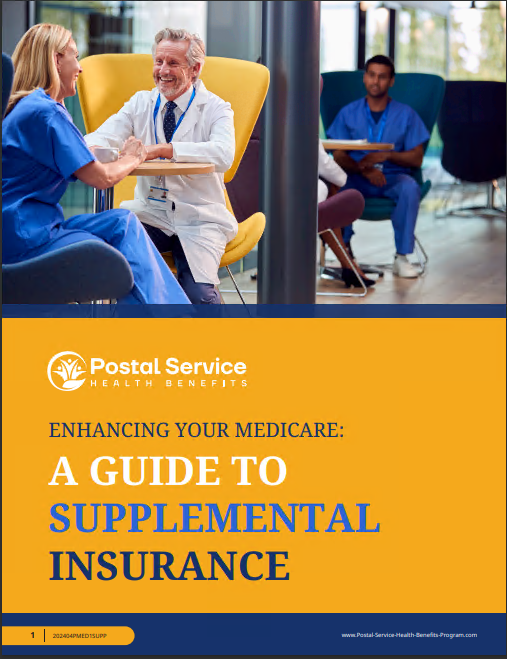Key Takeaways
-
The transition to the Postal Service Health Benefits (PSHB) Program in 2025 does not eliminate your access to life insurance or long-term care benefits, but it does not manage them either. You must actively maintain or change those benefits separately.
-
Federal Employee Group Life Insurance (FEGLI) and the Federal Long Term Care Insurance Program (FLTCIP) remain under the Office of Personnel Management (OPM) and are not impacted by PSHB enrollment directly.
Understanding What PSHB Changes—and What It Doesn’t
Starting January 1, 2025, the PSHB Program officially replaces FEHB for USPS employees and annuitants. While this shift affects your health insurance coverage, it does not impact your existing life insurance or long-term care benefits. These benefits operate independently and remain available through their respective federal programs.
It’s important to understand what’s changing—and what’s staying the same—so you can manage your benefits properly and avoid unexpected gaps.
Life Insurance Coverage Through FEGLI
The Federal Employees’ Group Life Insurance (FEGLI) program remains unchanged by the transition to PSHB. As a USPS employee or annuitant, your FEGLI coverage continues to be administered by OPM, not by the PSHB Program.
What You Need to Know:
-
Enrollment: If you are already enrolled in FEGLI, your coverage continues unless you cancel it.
-
Premiums: These are separate from your PSHB premiums and are deducted from your paycheck or annuity.
-
Changes: Changes to FEGLI, such as increasing or decreasing coverage, must be made during qualifying life events or designated enrollment periods.
-
Post-Retirement Coverage: Basic FEGLI coverage often continues into retirement, but optional coverage may reduce or end based on your election at retirement.
It’s essential to review your current FEGLI status during your retirement planning process. This ensures your coverage aligns with your long-term needs, particularly as premiums increase with age.
Long-Term Care Insurance with FLTCIP
The Federal Long Term Care Insurance Program (FLTCIP) also remains separate from the PSHB Program. Managed by OPM, FLTCIP offers long-term care coverage that is unaffected by your move to PSHB in 2025.
Key Points to Remember:
-
Existing Coverage: If you already have a FLTCIP policy, it remains valid and continues according to its original terms.
-
New Enrollment: As of 2025, FLTCIP is still under suspension for new enrollees since its halt in 2022. OPM has not resumed new enrollments yet.
-
Premium Payments: You are responsible for paying premiums directly. These are not tied to your PSHB premiums and may not be deducted from your annuity.
-
Policy Management: All updates or changes to FLTCIP policies must be handled through LTC Partners, not through your PSHB administrator.
What to Do If You’re Retiring in 2025
If you plan to retire in 2025, you’ll face two major tasks: choosing your PSHB plan and ensuring your life insurance and long-term care plans are secure.
Here’s a checklist to help guide you:
-
Review your FEGLI coverage and determine if your post-retirement coverage levels meet your needs.
-
Confirm your FLTCIP status and make sure your premium payments remain uninterrupted.
-
Understand that PSHB plans do not include life insurance or long-term care by default.
-
Plan ahead for increased premiums in life insurance as you age, particularly after age 65.
-
Contact OPM or a licensed agent if you need help evaluating your overall retirement benefits.
Managing Your Benefits in the PSHB Era
With PSHB now in place, benefits are split between different federal systems:
-
Health Insurance: Managed by PSHB under OPM, tailored for USPS retirees and employees.
-
Life Insurance (FEGLI): Still under OPM, managed independently of your health plan.
-
Long-Term Care (FLTCIP): Also under OPM, not included with PSHB and currently closed to new applicants.
Understanding this separation helps prevent confusion. You are now responsible for actively coordinating these separate benefit programs.
Cost Considerations in 2025
As of 2025, life insurance premiums—particularly for optional FEGLI coverage—can rise significantly based on your age group. For example:
-
Coverage in retirement is usually more limited unless you opt to pay higher premiums.
-
Reductions in coverage after age 65 are common unless you specifically choose and pay for “No Reduction” coverage.
Similarly, if you hold long-term care insurance through FLTCIP:
-
Premiums are set based on the policy selected and age at enrollment.
-
There are no government contributions to offset these costs.
You must budget separately for both types of insurance, as PSHB does not cover or assist with them.
What If You Don’t Have Life Insurance or Long-Term Care Coverage Yet?
If you are still employed with USPS and under age 65, you may have options:
-
FEGLI: You can only make changes during life events or Open Season, which is rare.
-
FLTCIP: As of now, new enrollments remain suspended. OPM may reopen applications in the future, but no date has been announced.
This means if you’re thinking about your retirement future, now is the time to evaluate:
-
Whether you need more or less life insurance based on your dependents.
-
Whether you’ll need support for long-term care and what other private or state-based options are available.
Coordination with Medicare
By the time you retire, Medicare may also come into play, especially if you’re 65 or older.
-
PSHB plans are structured to coordinate with Medicare Part A and B.
-
Medicare does not offer long-term care beyond limited skilled nursing or rehab.
-
It also does not offer life insurance of any kind.
Therefore, you cannot rely on Medicare to replace life insurance or long-term care insurance. These must be maintained through FEGLI or FLTCIP (or other alternatives).
Important Timelines to Keep in Mind
-
January 1, 2025: PSHB officially replaces FEHB for USPS employees and annuitants.
-
November to December (Annual Open Season): Review your PSHB plan and make changes if needed. Use this time to also assess your life insurance needs.
-
Age 65: Turning 65 often triggers important transitions—Medicare eligibility, potential changes in FEGLI costs, and shifts in FLTCIP coverage.
Planning around these timelines can help ensure a smooth transition with no unexpected lapses in coverage.
Getting the Right Help
Benefits like life insurance and long-term care are complex and often misunderstood. Since PSHB only covers your health insurance, it’s essential to be proactive with the rest of your federal benefits. You don’t want to assume coverage continues or applies when it doesn’t.
A licensed agent listed on this website can walk you through your specific situation, answer your questions, and ensure your retirement package meets your financial and family needs.
Secure Your Full Retirement Package with Confidence
Switching to the PSHB Program is a big milestone, but it’s only one piece of your total retirement picture. Don’t overlook your life insurance and long-term care needs. They are just as important to your peace of mind.
Make sure you:
-
Confirm your FEGLI elections and reductions.
-
Stay on top of FLTCIP payment obligations.
-
Watch for future changes or openings in federal benefit enrollment periods.
For personalized assistance, speak with a licensed agent listed on this website who can help guide you through your benefits strategy for 2025 and beyond.







